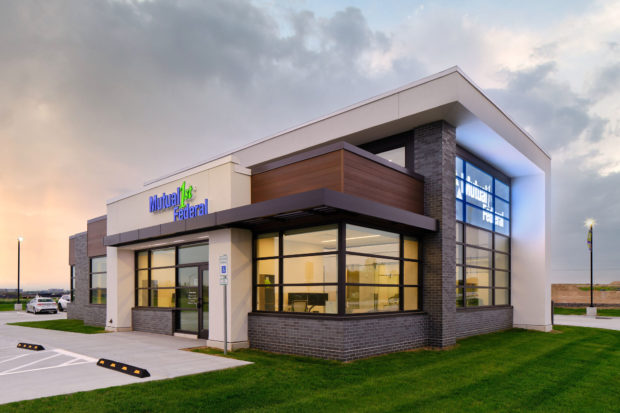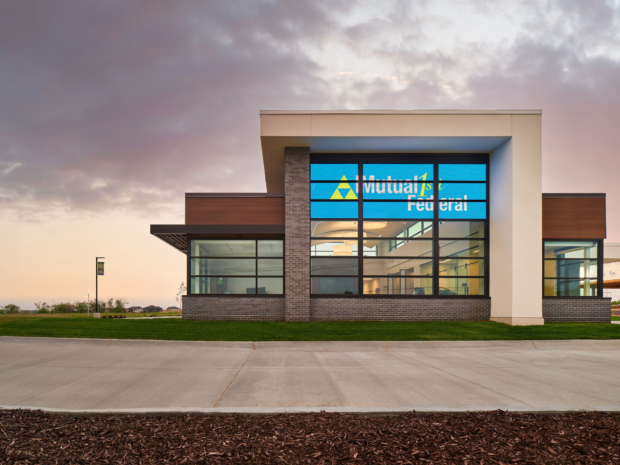Replacing the teller line with technology can seem like a big jump for community institutions that don’t want to risk relationships by eliminating personal interactions at the branch.
Even with all their reported benefits, executives must determine: Will an ITM teller line work in our market?
According to the experience of financial institutions like Five Star Credit Union, which rolled out three “technology” branches in 2018, locations with ITM teller lines show tangible results, and not just from a cost savings perspective. The Dothan, Ala.-based credit union only needed its ITMs to handle about 850 transaction a month to justify their cost. At the time, the most efficient credit unions looked for about 2,500 transactions per month from a teller.
“We soon found that members engaged with the ITMs at all hours of the day, and our ITMs were doing way more than 850 transactions,” says Tyler Beck, the credit union’s chief operating officer. “They handled 4,500 per month, which is 2,000 more than we expected from a full-time employee. The efficiency gains came to fruition relatively quickly.”
Loans hit the roof as well. Technology branches went from submitting $10 million in loan applications to 30 million the next year. With that kind of return, “we don’t look at this approach from the standpoint of cost,” Beck says. “It’s an investment.”
Even with Five Star’s successes, Beck called implementing ITMs “a journey.” Results didn’t come simply from installing a new technology. ITMs are a part of a new and more comprehensive approach to data-based design, staff processes, and member engagement orientated to make the most of every interaction.
Finding a Market-Branch Match
When Mutual 1st Federal Credit Union began preparing to build a new location in Omaha, Neb., it knew it needed to utilize technology differently. But how should leaders decide which technology to prioritize, what layout to use, or where to place the branch?
“We knew that in expanding our footprint and that we weren’t going to create the same branch,” Kevin Straub, president and chief executive of Mutual 1st, tells The Financial Brand. “We wanted to [identify], through the data, the best location for the new branch based on consumers who would be receptive to technology.”
The $122 million credit union started with a heat map of households — both prospective and current members — within the intended market, Tim Klatt, says director of Retail Strategies at La Macchia Group. Through a level of analysis often out of reach for most banks and credit unions, Mutual 1st selected a location using data on age, number of household members, income, education, and even data on preferences for local service providers.
Klatt says analysis often reveals unknown unknowns. Age and its relationship with technology usage is one example. “Education and income are more indicative of account-holder use of technology,” he tells The Financial Brand. “They determine tech usage more than age.”
A market with a healthy population of families — especially those with school-age children — can signal a strong entry point for ITMs. They allow for far more operating hours that accommodate the schedules of busy parents, Klatt explains.
What are two starter questions executives should answer when considering ITM teller lines? “I would look at the core. Can it integrate and facilitate those transactions?” he says. “Start with market information too, do all other retailers in the area have self-service checkout? And do people use them? That can provide a great first impression for what the market will adopt at a branch.”
ITMs Support Branch Sales in a Very Practical Way
Banks and credit unions have long expected tellers to talk with customers and to listen for potential financial needs that can signal an opportunity for an upsell. When possible, tellers refer account holders to a personal banker, but that referral has similar challenges to the game of telephone: The next person in line only receives what the prior person understood; tellers don’t refer if they don’t pick up on an opportunity vocalized by a customer or member.
Tellers can easily miss details in a conversation when their hands are busy with cash or checks. Missed opportunity can arise from a teller simply not realizing a member has provided them an opening. They’re usually not as well versed on the products and services of the institution as universal bankers.
The process adopted by institutions that launch ITM teller lines gets at the heart of that practical problem.
“Universal bankers are often the greeter assigned to welcome and accompany members to the ITM,” Klatt explains. “They now have time to talk with the member as they walk to the ITM, and they do not need to focus on facilitating a transaction as they do.”
“Universal bankers are often the greeter assigned to welcome and accompany members to the ITM. They now have time to talk with the member as they walk to the ITM, and they do not need to focus on facilitating a transaction as they do.”
— Tim Klatt, La Macchia
Five Star observed these benefits in action as its loan growth accelerated after rolling out ITM installations. “It has allowed us to focus on member engagement, which is our strategic priority, [as opposed to] training people to process a withdrawal or a deposit,” says Beck. “Rather than expecting everybody to be subject matter experts in everything…we were able to train for conversations about loans.”
Banks and credit unions are even taking the transaction data from ITMs to develop sales processes for their teams, especially for serving segments in customer base, Klatt adds. “You can start to look at successes in your data, which you then can use to go out into the marketplace to serve that segment even more widely.”
Adoption from Staff and Account Holders
Fear is often a more significant obstacle for staff in adopting ITMs than for account holders.
“Initially, staff was concerned that we were going to go through and replace all employees with machines,” Beck says. “We communicated that we would roll out ITM teller lines only in new locations; we’d put them only in the drive-through at existing locations.”
Even with Five Star’s approach, it took staff time to get them comfortable with ITMs. But the fear dissipated once employees saw the machines only handle the transactions, Beck says. “It became an opportunity to invest in the members and themselves from a training and development standpoint.”
As staff buy in, they can help members realize they don’t need a human to physically handle a simple transaction. “One of my favorite stories is about an older member who had used ITMs for cash, but her mind a machine wouldn’t process a check; she thought needed a human teller,” Beck recounts. “A staff member asked if he could help her do it. It took 30 seconds. And then she said she would have done it the whole time if she had known it was that easy.”
ITM adoption is about firsthand experience, he continues, and institutions need to help staff and members “overcome the myths” about banking transactions.
Venturing Into New Aesthetics
Some 91% of consumers say it was at least somewhat important that their financial institution have physical locations nearby, according to a recent study by La Macchia Group. In Mutual 1st’s experience, the new branch doesn’t need to be a mirror of the institution’s other locations.
For instance, Mutual 1st’s new technology-based branches removed the teller line, but kept the greeter station in a similar location. Members still see a person in a similar spot as they would have in older banking locations. “We wanted to make it feel aesthetically much more modern,” Straub says. “There was purpose to everything. We want to provide an empowering experience.”
“There was purpose to everything. We want to provide an empowering experience.”
— Kevin Straub, Mutual 1st
With that “concierge” waiting and ready to help, members are quickly orientated to the ITMs as they talk with staff. “We’ve had people come in to do a transaction, and they’ve sat down and done a loan application while they were in there,” says Straub. “We want a center where people feel like staff will help them with their banking needs.”
The 3,100-square-foot branch has five offices for conducting business with members, but it only needs three employees to operate it. Straub notes the extra rooms allow the credit union to add staff down the road. The branch is the first in its development, he adds, and construction has started on surrounding properties.
Mutual 1st’s new location stands out — quite literally — slightly on a hill, in a corridor with a lot of traffic. An enormous LED screen, which is also transparent and allows natural light into the branch, draws the attention of passers-by.
“We wanted something that would grab people’s attention,” said Straub. The screen created awareness around the branch’s opening, promotes events within the community as well as the products and services offered by the credit union. “We’re trying to make sure that we’re not only positioning ourselves but that we are in the community and support the community,” Straub adds. “That was an important piece.”
Now, when Mutual 1st polls members on how they learned about the organization, the number one answer is unilaterally from seeing a branch location. Straub expects traffic to increase as word gets out in the community.










